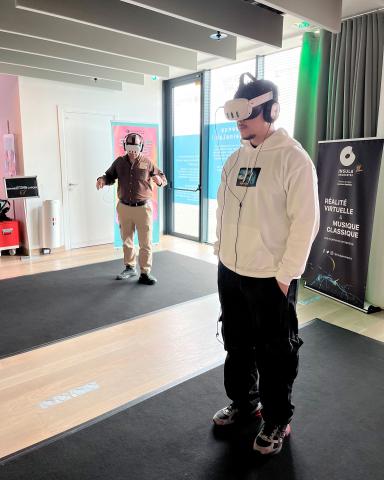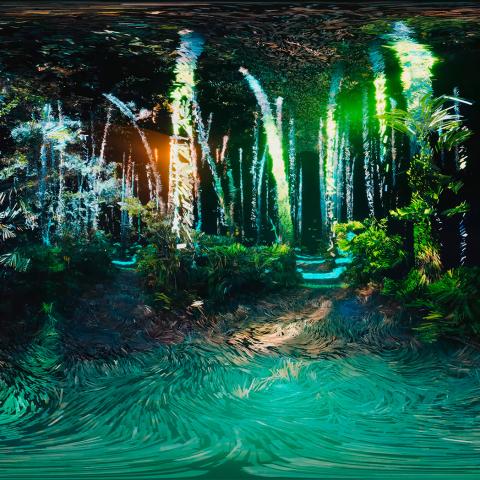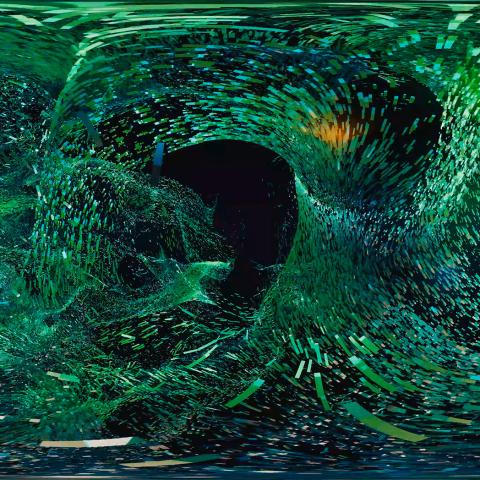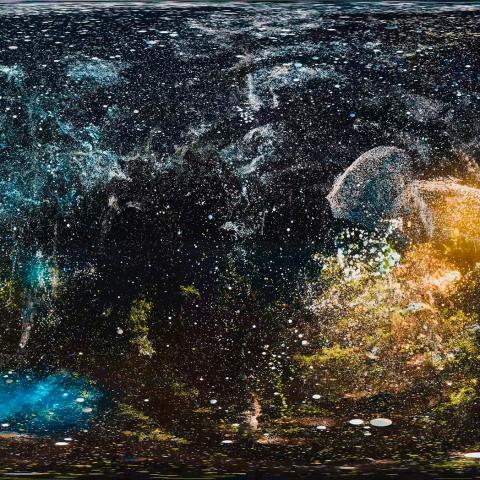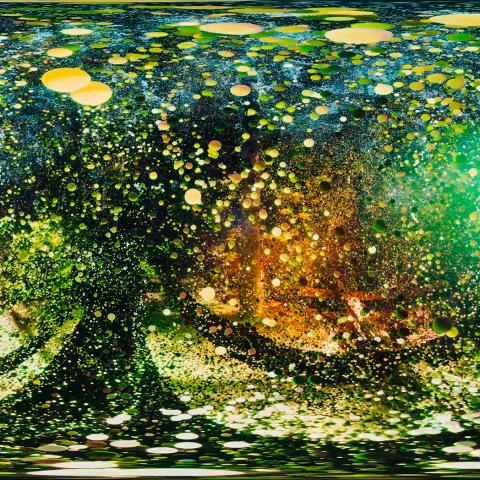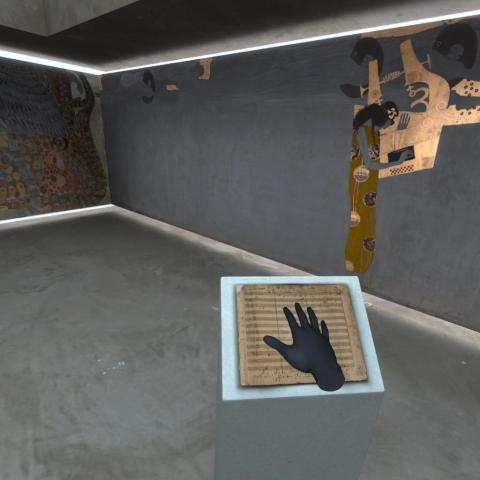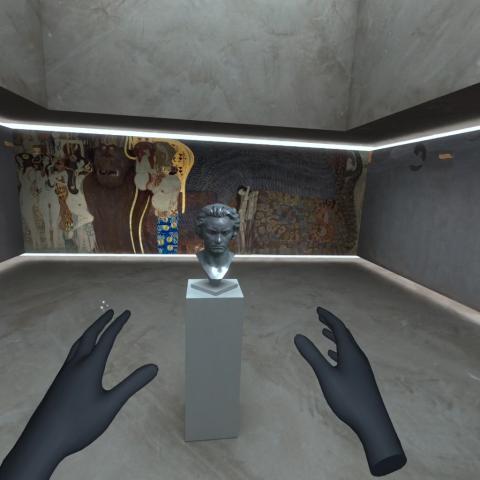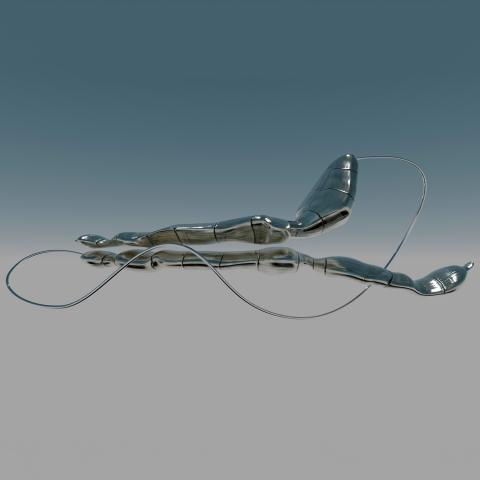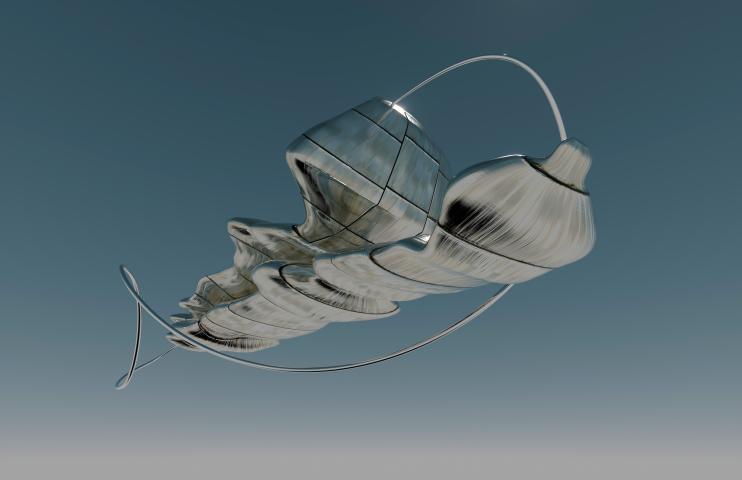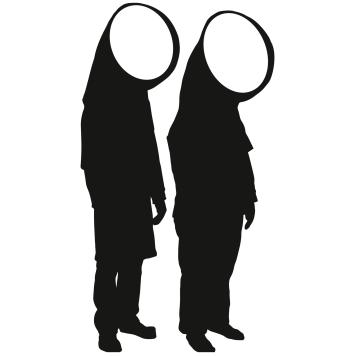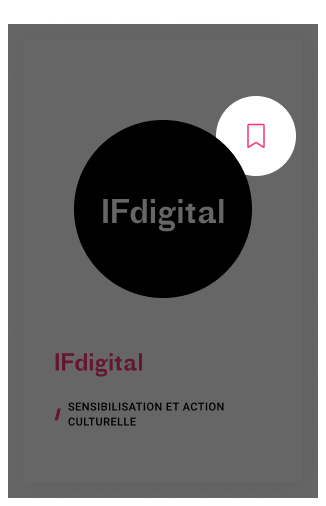It all stems from an approach developed by conductor Laurence Equilbey.
She imagines a visual representation of the sonata form to help grasp the global coherence, structure, and principles of its construction. In this way, the musical architecture, visible in the score, takes on a new reality, discernible and easily accessible by all, without violating the composer’s intention. The architecture becomes sculpture. The user is drawn into an interactive musical promenade, a sensory experience.
ArchiBeethoven - Sonata form
Find out more
User path
Part One: The Beethoven Frieze
In 1902, the Secession Building in Vienna hosted an exhibition dedicated to Ludwig van Beethoven. The centerpiece of this project was a mural designed by Gustav Klimt: seven panels measuring 34.14 meters long and 2.15 meters high depict the Ninth Symphony. This exhibition aimed to create a total work of art by showcasing the interaction between architecture, painting, sculpture, and music. Users of the experience can get up close to this mural to discover its finest details. At the center of the room is a bust of the composer created by Anton Fernkorn in 1863 and the manuscript of the Pastoral Symphony. As one approaches the score, a popular Eastern European theme, here sung in Serbian, which inspired Beethoven for the first theme of the symphony, can be heard.
Part Two: The Forest Walk
In 1808, Beethoven composed an homage to nature with his 6th Symphony, subtitled “Pastoral Symphony or Recollection of Life in the Countryside.” He made his Pastoral Symphony a true poem to nature. However, more than a realistic depiction of nature, the composer of the Romantic era sought above all to convey the emotions and feelings he experienced during his daily walks in Mödling, near Vienna.


Merci pour votre contribution.
Vous serez informés de sa publication ou d’une éventuelle demande de compléments.







